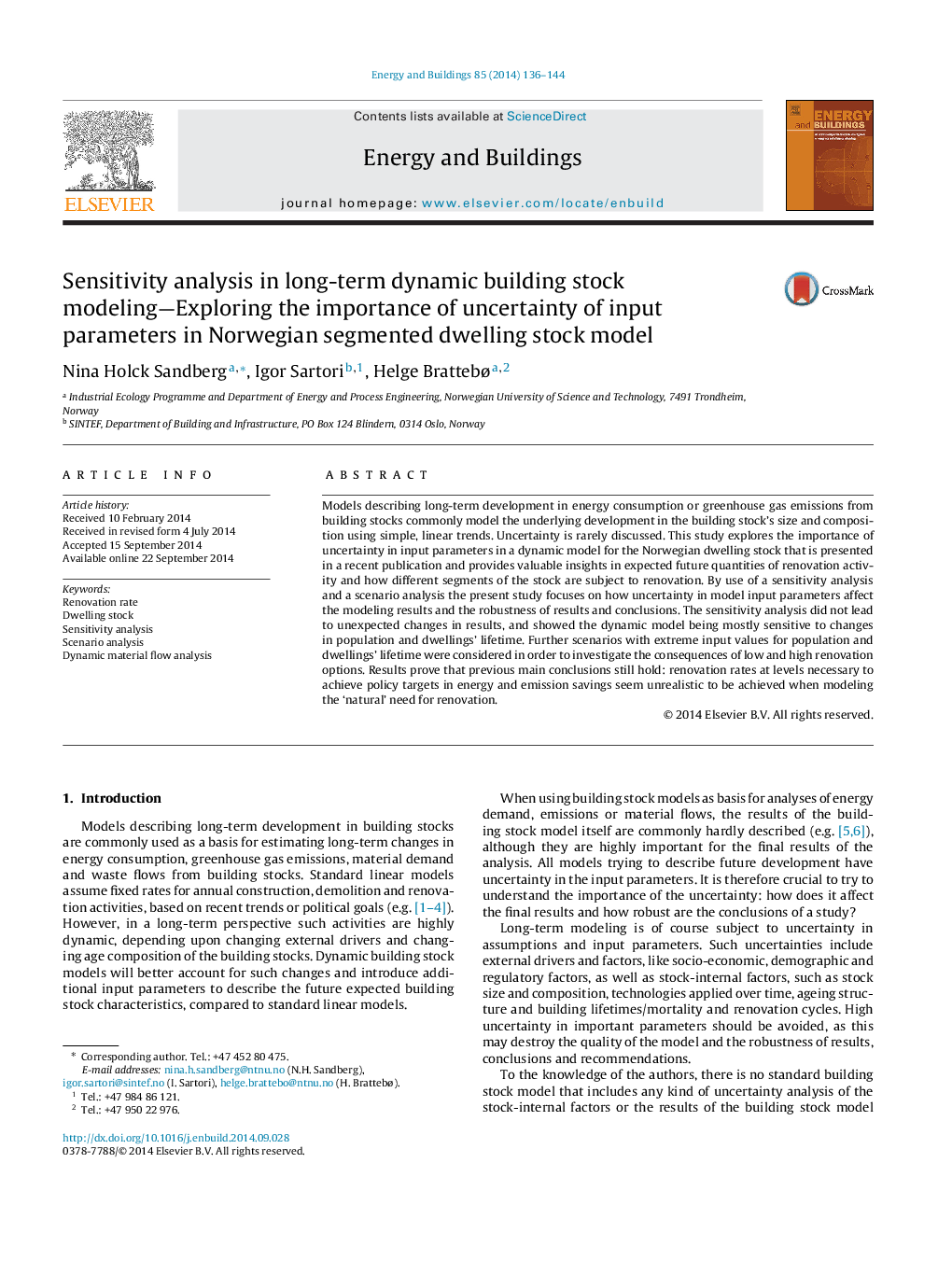| Article ID | Journal | Published Year | Pages | File Type |
|---|---|---|---|---|
| 6733149 | Energy and Buildings | 2014 | 9 Pages |
Abstract
Models describing long-term development in energy consumption or greenhouse gas emissions from building stocks commonly model the underlying development in the building stock's size and composition using simple, linear trends. Uncertainty is rarely discussed. This study explores the importance of uncertainty in input parameters in a dynamic model for the Norwegian dwelling stock that is presented in a recent publication and provides valuable insights in expected future quantities of renovation activity and how different segments of the stock are subject to renovation. By use of a sensitivity analysis and a scenario analysis the present study focuses on how uncertainty in model input parameters affect the modeling results and the robustness of results and conclusions. The sensitivity analysis did not lead to unexpected changes in results, and showed the dynamic model being mostly sensitive to changes in population and dwellings' lifetime. Further scenarios with extreme input values for population and dwellings' lifetime were considered in order to investigate the consequences of low and high renovation options. Results prove that previous main conclusions still hold: renovation rates at levels necessary to achieve policy targets in energy and emission savings seem unrealistic to be achieved when modeling the 'natural' need for renovation.
Related Topics
Physical Sciences and Engineering
Energy
Renewable Energy, Sustainability and the Environment
Authors
Nina Holck Sandberg, Igor Sartori, Helge Brattebø,
